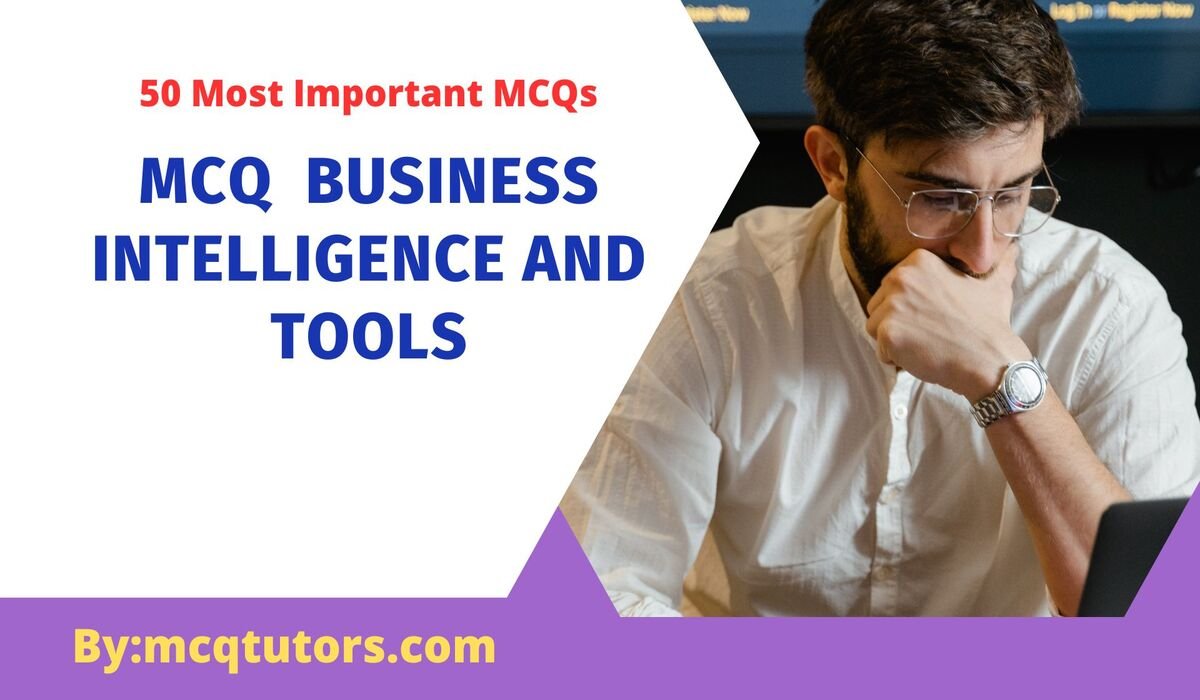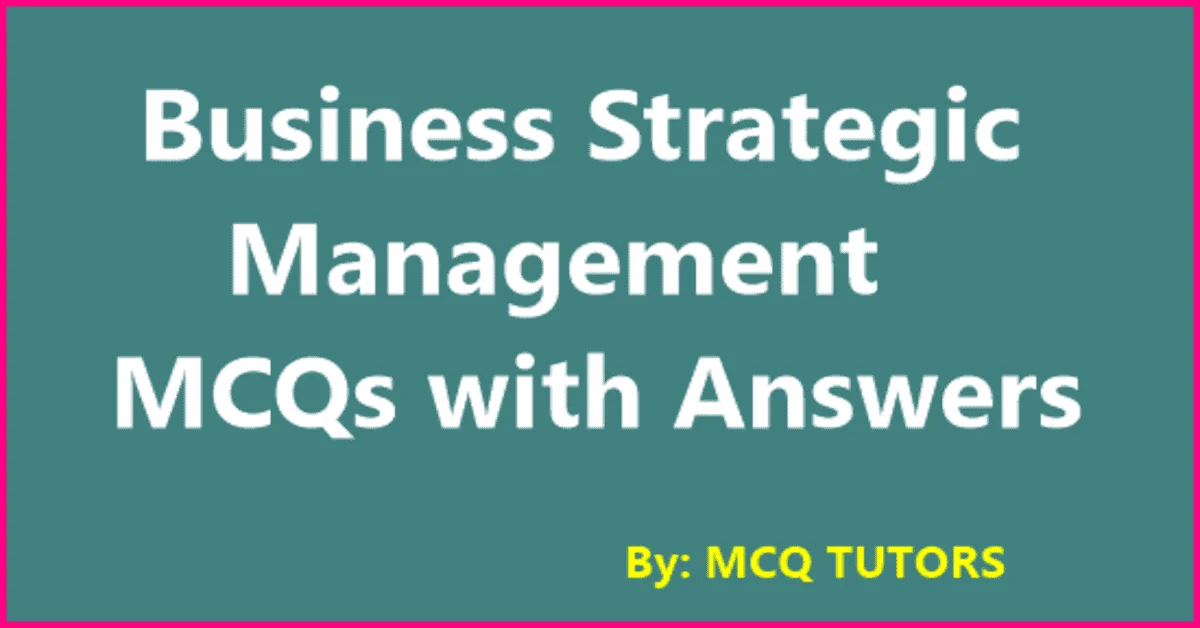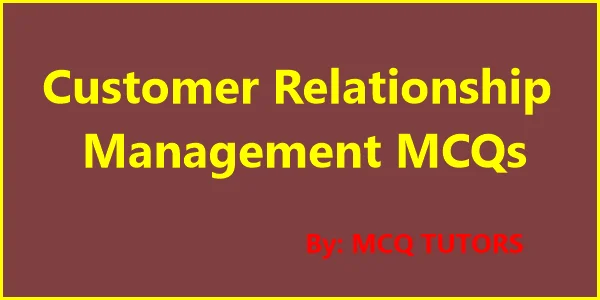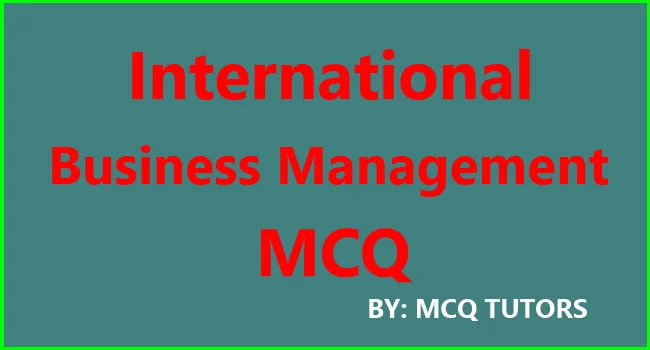Are you looking for Business Intelligence and Tools Multiple Choice Questions (MCQs) in PDF format? If so, then you have come to the right place!
With the ever-increasing importance of Business Intelligence and Tools, having access to accurate and up-to-date material is essential.
Here we provide a collection of MCQs related to the topic so that one can gain an understanding of the subject and prepare for examinations.
What is Business Intelligence and Tools
Business Intelligence is a term that refers to the process of collecting, analyzing and interpreting data in order to make informed business decisions.
It involves using various tools and techniques to transform raw data into meaningful insights that can help organizations identify trends, patterns and opportunities.
In today’s fast-paced world where businesses are constantly looking for ways to stay ahead of the competition, Business Intelligence has become an essential tool for success.
Business Intelligence tools come in different shapes and sizes, ranging from simple spreadsheets to complex software applications.
Some of the most popular Business Intelligence tools include Microsoft Power BI, Tableau, QlikView and SAP Business Objects. These tools allow organizations to collect data from multiple sources such as databases, social media platforms and websites.
50 Business Intelligence MCQ Questions and Answers
1. ___ is methodology-based scorecards, such as the Balanced Scorecard, and strategy management applications.
Ans. Scorecards and strategy
2. Give an example of Business Intelligence.
Ans. Industry analysis
3. ___ are the final goals for authors, vendors and IT consultants when commencing the BI projects.
Ans. Insights
4. ___ uses the plan to achieve its desired goal.
Ans. Intelligence
5. Information is verified to be ___.
Ans. Precise
6. Intelligence is a sometimes called as ___.
Ans. Active data
7. ___ is both the quality of the location for sharing information and the quality of the human resources.
Ans. Knowledge Quality
8. ___and ___ are the technology resources that support the human resource in an intelligent learning organisation.
Ans. Data resource, Information engineering
9. ___ is the knowledge that has been delivered clearly to a community of people, such as an organisation.
Ans. Explicit knowledge
10. ___ Is the system aligned to strategic operations and goals of the organisations?
Ans. Relevance
11. The most important parameter in BI is accuracy. State True or False.
Ans. True
12. BI applications are difficult to use and make information less accessible, State True or False.
Ans. False
13. ___ applications are very isolated,
Ans. Business intelligence application
14. BI application system requires the ability to make casual decisions in a less and fast time frame. State True or False
Ans. False
15. BI helps in identifying and understanding the relationship between business processes and performance. (True/false).
Ans. True
16. BI cannot be called decision support systems. State true or false.
Ans. False
17. BI provides users with the information which is required to make the most effective decisions for their organisations. State true or false.
Ans. True
18. ___ is a technique used to source data from a data warehouse or data mart.
Ans. OLAP
19. Data warehouse is a ___ that stores business-related information.
Ans. Database
20. In presentation layer, the data stored within the data infrastructure is transformed to information that can be analysed further. (True/False).
Ans. False
21. Through interactive user interfaces such as ___, the end users can slice and dice, and access information through interactive visualisations.
Ans. Dashboard
22. The ___ layer gives the decision makers the access to business data and the ability to make informed decisions.
Ans. Presentation
23. ___ is the process by which we can identify, model and document the movement of data around an information system.
Ans. Data flow modeling
24. ___ is a design technique for databases intended to support end-user queries in a data warehouse.
Ans. Data modeling
25. To create a successful BI report, a lot of attention must be given only to IT professionals.
State true or false.
Ans. False
26. There are three factors that make BI available across users within an organisation that empowers many individuals. (True/False).
Ans. True
27. ___is the means by which organisations interpret the ocean of data to derive insights that are critical to compete in the world economy.
Ans. Business Intelligence
28. ___ provides the foundation for end-to-end solutions that provide both advanced data management and easy to use analysis and reporting tools.
Ans. BI platform
29. Measuring ___ and monitoring for improvements is the first step towards being sustainable.
Ans. Sustainability
30. ___ have considerable power and influence through investments.
Ans. Stakeholders
31. While selecting a KPI, reflect the ___.
Ans. Organisational goal
32. An important part of an organisation is working with stakeholders (True/False).
Ans. True
33. Microsoft Office Suite is a ___application.
Ans. BI
34. The three types of decisions are ___, ___ and ___decisions.
Ans. Strategic, tactical and organisational
35. BI looks for authoritative sources of data that define limited, concrete, dimensional definitions of the business and use those to perform ___.
Ans. Reporting
36. Getting the right people involved in a project is the key to success setting the right expectations and communicating well to avoid disappointment by the customer. (True/False).
Ans. True
37. Tools for developing analytical reporting can be expensive and requires an in depth knowledge to use it effectively. (True/False).
Ans. True
38. Implementing Business Intelligence requires a lot of ___ and ___.
Ans. Analysis and investment
39. Data marts are constructed from dimensional ___
Ans. Data model
40. BI serves as a tool to examine performance, strategic and statistical planning and develop future statistical plans. (True/false).
Ans. True
41. Business Intelligence is ___ method which is used in departments which identifies, extracts, and evaluates production data.
Ans. Computer-based
42. ___of Business Intelligence offers past, existing, and observations which can be expected in future which are of business operations.
Ans. Multiplicity
43. BI uses technologies, processes, and functions to examine mainly internal, planned data and___.
Ans. Business methods
44. ____ Business Intelligence uses graphs and other illustrations to keep track of an organisation’s performance of the earlier period as well as future terms.
Ans. Traditional
45. One of the vital characters of a ___is the capacity to re-calculate the complete sheet after an alteration to a single cell.
Ans. Spreadsheet
46. ___is a process management technique that allow for the analysis of business processes based on event logs.
Ans. Process mining
47. ___ is also referred to as Management Information Systems.
Ans. Digital Dashboard
48. Enterprise Business Intelligence is a process mainly concentrates on the gathering, investigation, distribution, and ___use of information.
Ans. Appropriate
49. An ___ scheme essentially modifies the way an organisation expects and makes conclusions.
Ans. Enterprise BI
50. The most significant factor in gathering enterprise business intelligence is ___.
Ans. Output
Conclusion:
MCQ business intelligence and tools help organizations make better decisions and provide a competitive edge. This type of data analysis can identify patterns, provide actionable insights, measure performance and assist with forecasting.
It creates opportunities to leverage the power of data in order to achieve increased productivity, profitability, and growth. MCQ business intelligence and tools can help organizations improve efficiency, stay on top of market trends, maximize profits and avoid costly mistakes.
Read more:
- MCQs ON VB.NET AND XML
- Visual Merchandise MCQs with Answer
- MCQs on WML and WAP Programming
- MCQs Business Intelligence and Tools




